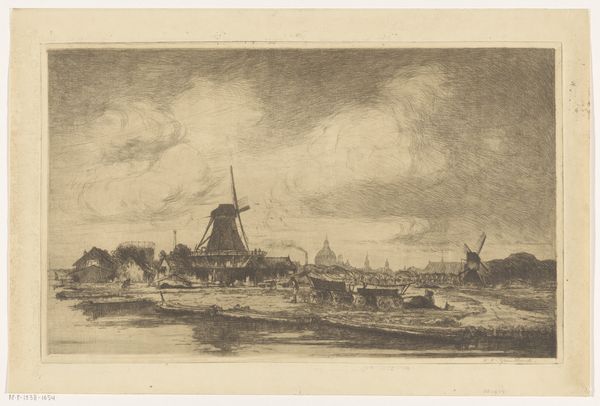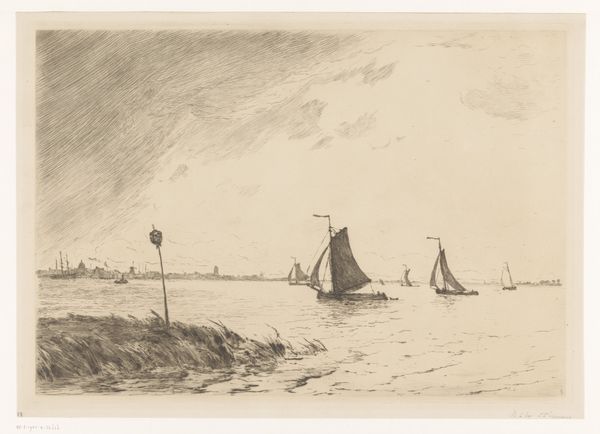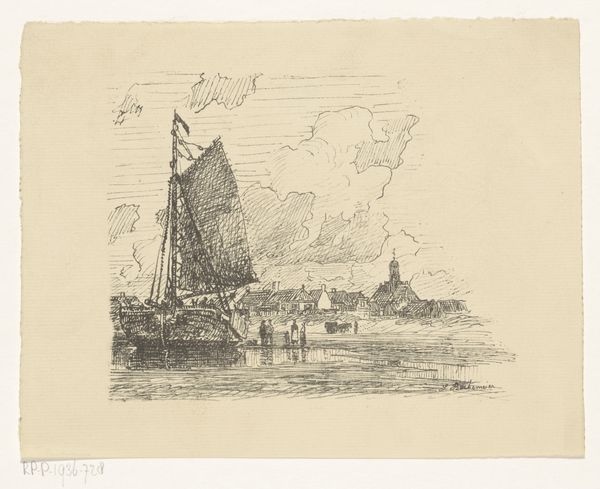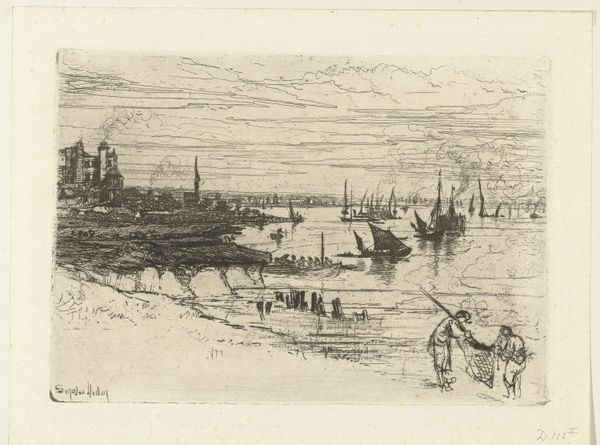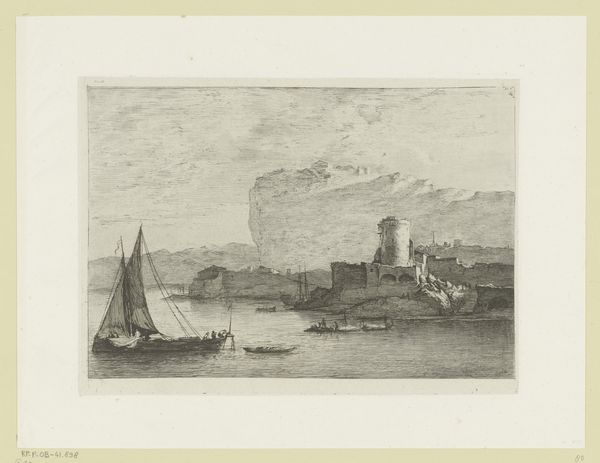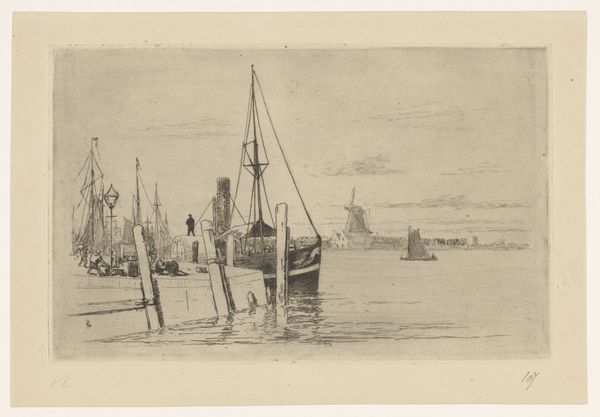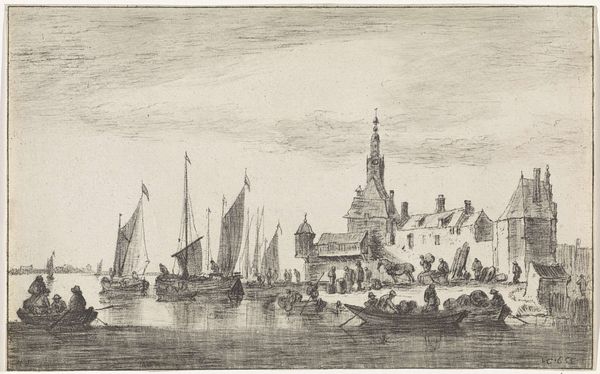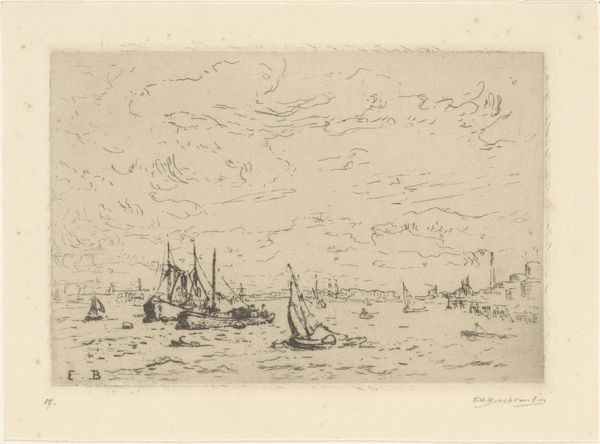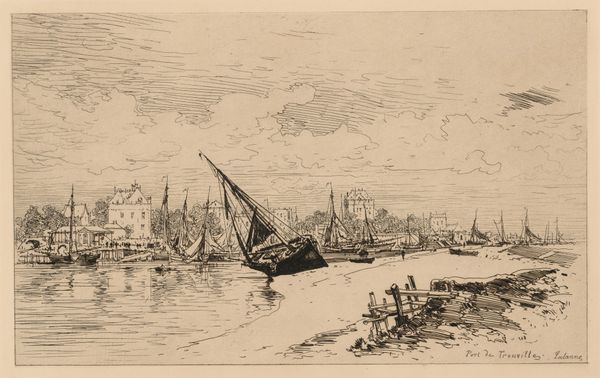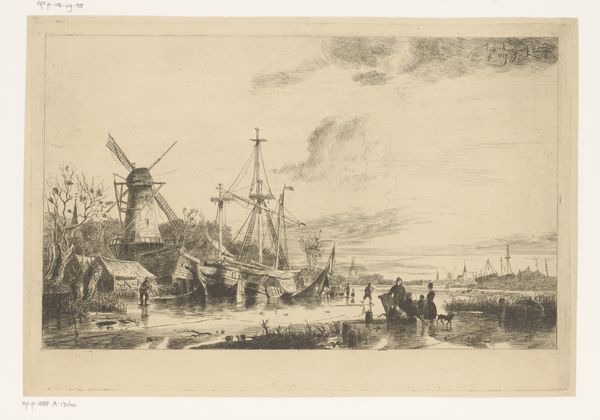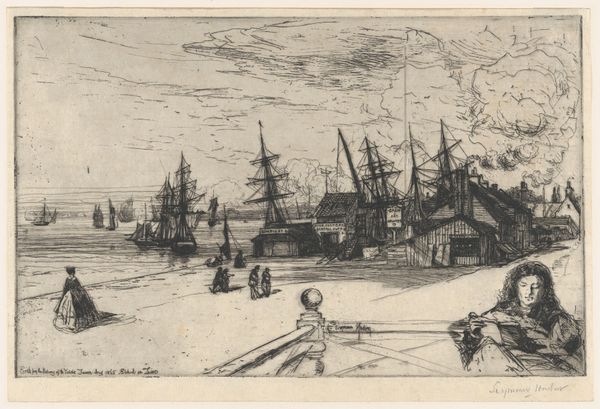
#
amateur sketch
#
light pencil work
#
ink drawing
# print
#
pen sketch
#
pencil sketch
#
incomplete sketchy
#
etching
#
ink drawing experimentation
#
pen-ink sketch
#
pencil work
Dimensions: plate: 23.9 x 35 cm (9 7/16 x 13 3/4 in.) sheet: 34.2 x 44.9 cm (13 7/16 x 17 11/16 in.)
Copyright: National Gallery of Art: CC0 1.0
Editor: Here we have Adolphe Appian's "Port of San Remo," created in 1878, a print with etching. There's something about the sketchy quality that makes it feel very immediate and intimate, almost like a snapshot. What stands out to you? Curator: The “snapshot” feeling is interesting. This piece, despite appearing straightforward, is deeply embedded within the socio-political context of 19th-century European expansionism. These ports were not just picturesque locations, but sites of intense colonial activity and global exchange. Do you notice how the architecture contrasts with the natural landscape? Editor: Yes, the building with the dome stands out against the somewhat chaotic shoreline. Curator: Exactly. Consider who benefits from this division. Etchings like this became popular due to their reproducibility, enabling the widespread dissemination of images that subtly promoted an idealized vision of European control over newly accessible lands and trade routes. The "quaintness" we perceive might obscure the realities of labor exploitation and resource extraction underpinning that era. What do you think about the presence of local people on the port, barely noticeable, rendered as small dark dots? Editor: I see what you mean. They blend into the scene, almost as part of the landscape. Is that intentional? Curator: It makes me question the romantic narrative, the narrative where the land belongs to its beholders, devoid of all sociopolitical meanings. By portraying them in this way, Appian potentially diminishes their individual agency and historical significance, casting them more as features of the scenery than active participants in their own changing world. Editor: That gives me a lot to consider; it changes the way I view the work, now noticing what isn't highlighted. Curator: Exactly! Art reflects and shapes society; our responsibility lies in critically examining those reflections.
Comments
No comments
Be the first to comment and join the conversation on the ultimate creative platform.
